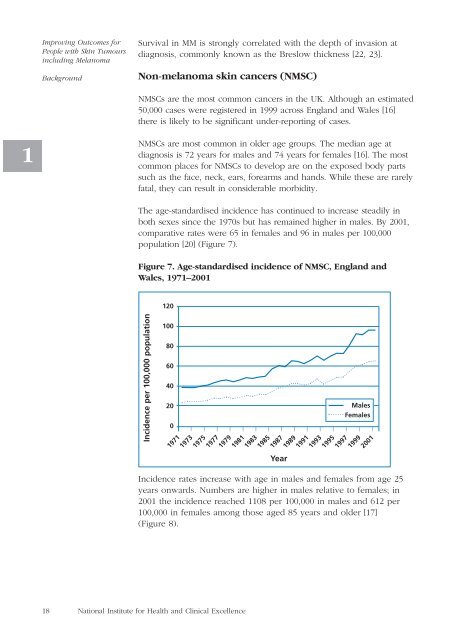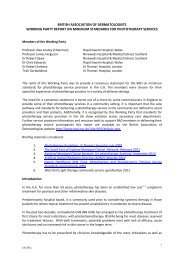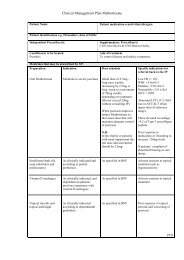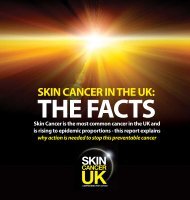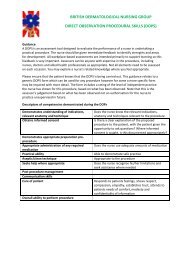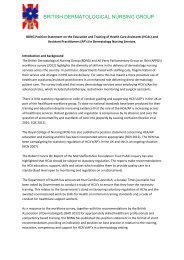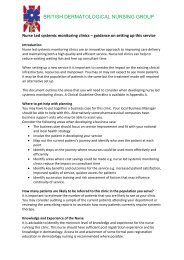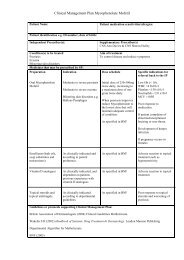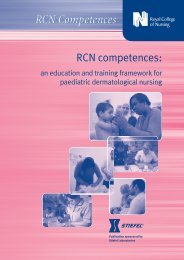Improving outcomes for people with skin tumours including melanoma
Improving outcomes for people with skin tumours including melanoma
Improving outcomes for people with skin tumours including melanoma
You also want an ePaper? Increase the reach of your titles
YUMPU automatically turns print PDFs into web optimized ePapers that Google loves.
<strong>Improving</strong> Outcomes <strong>for</strong><br />
People <strong>with</strong> Skin Tumours<br />
<strong>including</strong> Melanoma<br />
Background<br />
Survival in MM is strongly correlated <strong>with</strong> the depth of invasion at<br />
diagnosis, commonly known as the Breslow thickness [22, 23].<br />
Non-<strong>melanoma</strong> <strong>skin</strong> cancers (NMSC)<br />
NMSCs are the most common cancers in the UK. Although an estimated<br />
50,000 cases were registered in 1999 across England and Wales [16]<br />
there is likely to be significant under-reporting of cases.<br />
1<br />
NMSCs are most common in older age groups. The median age at<br />
diagnosis is 72 years <strong>for</strong> males and 74 years <strong>for</strong> females [16]. The most<br />
common places <strong>for</strong> NMSCs to develop are on the exposed body parts<br />
such as the face, neck, ears, <strong>for</strong>earms and hands. While these are rarely<br />
fatal, they can result in considerable morbidity.<br />
The age-standardised incidence has continued to increase steadily in<br />
both sexes since the 1970s but has remained higher in males. By 2001,<br />
comparative rates were 65 in females and 96 in males per 100,000<br />
population [20] (Figure 7).<br />
Figure 7. Age-standardised incidence of NMSC, England and<br />
Wales, 1971–2001<br />
Incidence per 100,000 population<br />
120<br />
100<br />
80<br />
60<br />
40<br />
20<br />
0<br />
1971<br />
1973<br />
1975<br />
1977<br />
1979<br />
1981<br />
1983<br />
1985<br />
1987<br />
Year<br />
Males<br />
Females<br />
1989<br />
1991<br />
1993<br />
1995<br />
1997<br />
1999<br />
Incidence rates increase <strong>with</strong> age in males and females from age 25<br />
years onwards. Numbers are higher in males relative to females; in<br />
2001 the incidence reached 1108 per 100,000 in males and 612 per<br />
100,000 in females among those aged 85 years and older [17]<br />
(Figure 8).<br />
2001<br />
18<br />
National Institute <strong>for</strong> Health and Clinical Excellence


